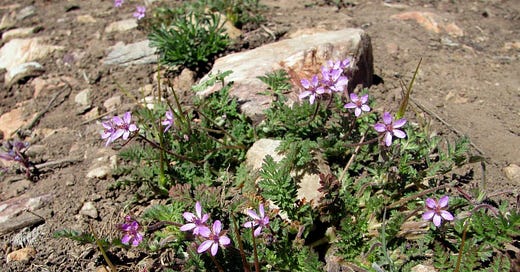Introduced Plants, Settler-Colonialism, Indigenous Perspectives and Decolonization
Exploring the wider context of "invasive land ethics"
Another chapter from the book that Nikki Hill and I are co-authoring, tentatively entitled: “Don’t Blame the Messengers: A critique of the ‘invasive plant’ narrative.” Here we attempt to highlight some ideas that are on the leading edge of some complex and nuanced conversations.
One spin on the “invasive plant” narrative frames such species as settler-colonial occupiers who displace native plants traditionally used by Indigenous people for food, medicine, crafts and ceremony. Further, this spin hails eradicating such plants as an act of “decolonization.”
There are a few issues with this spin. First, it’s just another version of the “blame the messenger” trope, characterizing particular plant species as aggressive drivers of change, rather than the opportunistic passengers that they far more typically are. Secondly, and as a corollary, this spin underemphasizes the enormous ecological effects on native flora and fauna when Indigenous American people were removed from their lands, disrupting or ending their wildtending and agricultural practices, leading to the decline of some species. Third, it brushes aside the nuanced relationships that many Indigenous Americans had—and have—with plants introduced from Europe, which in many cases they adopted into their culinary, medicinal, crafting and ceremonial practices, sometimes giving them their own names in their languages. Fourth, it ignores the long history of Indigenous Americans intentionally moving around plants and introducing them into new areas pre-Columbus, which played no small part in establishing the “native ranges” of these plants as they are defined today. Lastly, it fails to recognize that applying the “invasives” narrative is itself, we would claim, an imposition of settler-colonial values.
Keep reading with a 7-day free trial
Subscribe to Speaking for the Trees, No Matter Where They're From to keep reading this post and get 7 days of free access to the full post archives.





